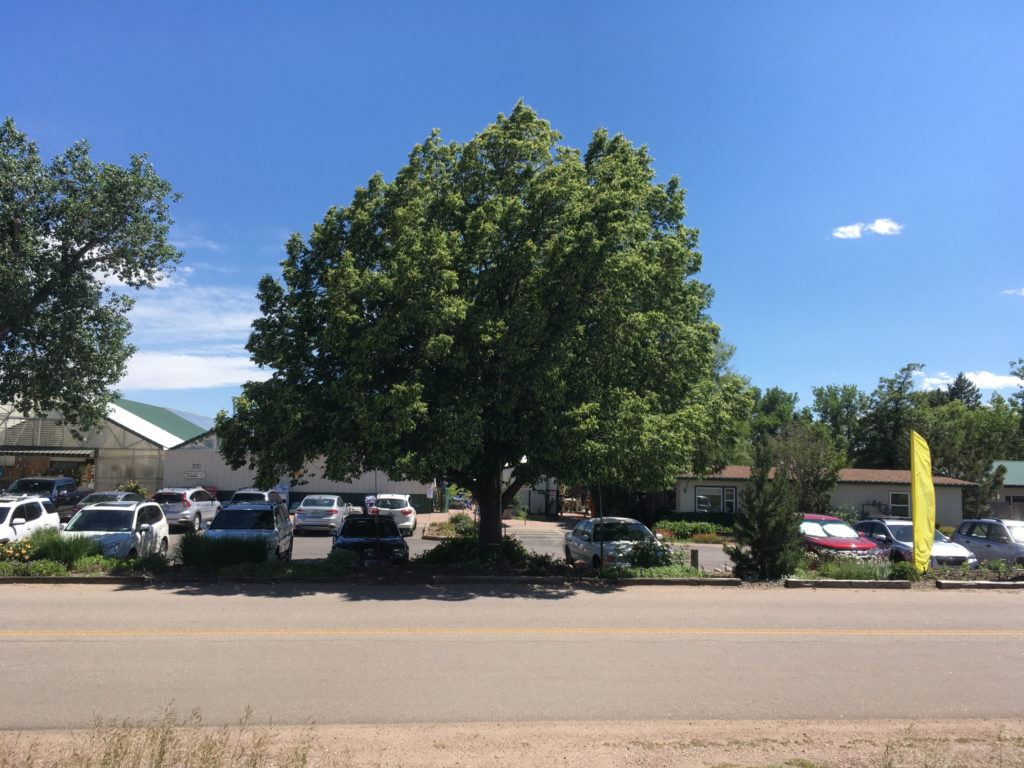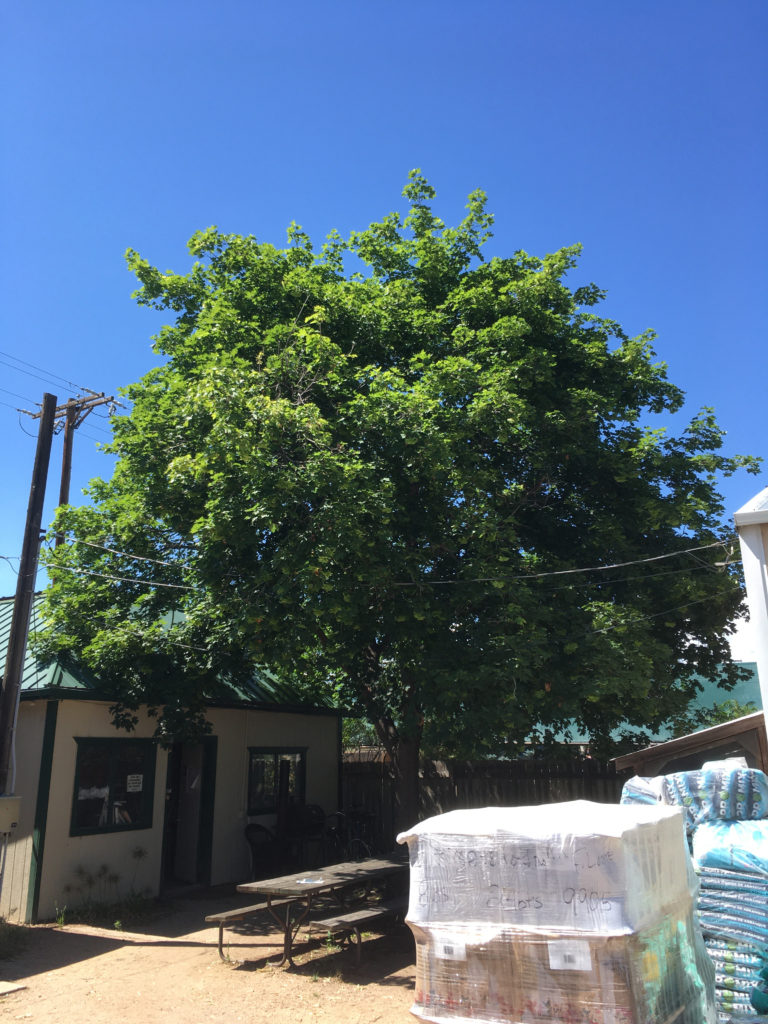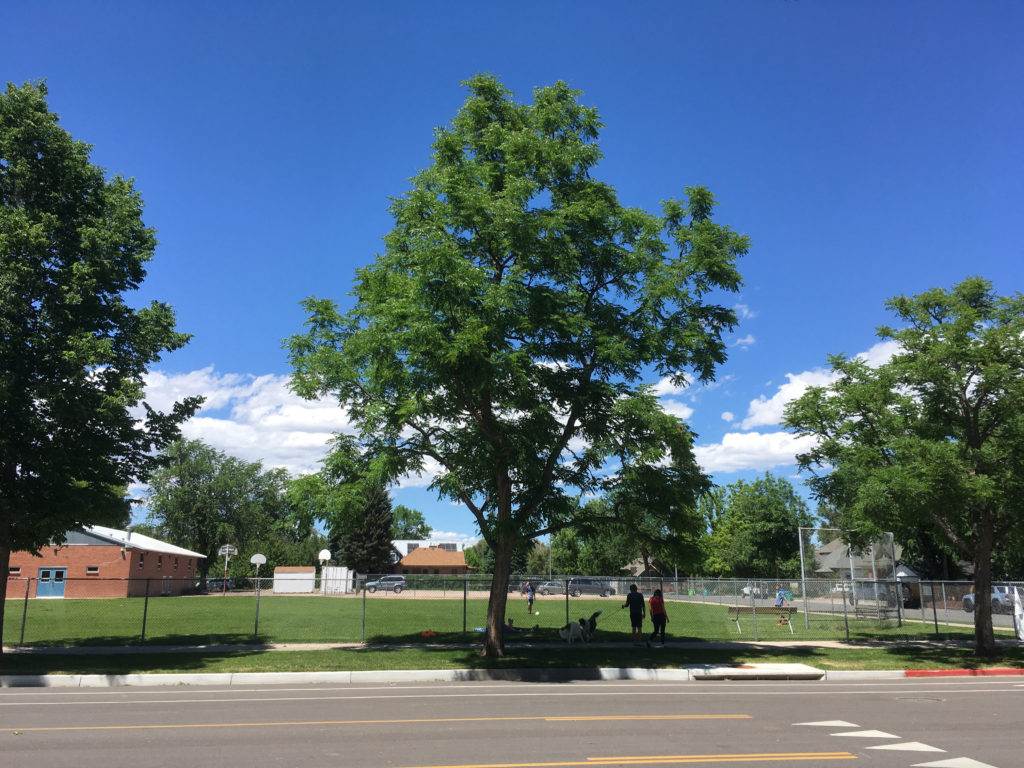
Fort Collins Nursery
It’s here. The green gobbler. The voracious vermin known as Emerald Ash Borer (EAB) has been officially identified in Larimer County as far back as October 2019 in Berthoud, and most recently it was positively identified on the outskirts of Fort Collins in mid-May. This insect has laid waste to ash populations throughout the eastern US and the Midwest and has relentlessly marched westward, crossing the Great Plains and establishing a foothold along the Colorado Front Range. For more on the Fort Collins infestation and what it means for urban trees, click here: https://northfortynews.com/category/news/emerald-ash-borer-detected-in-fort-collins/
We’ve known that it was not a matter of if, but of when this invasive pest would arrive. With that knowledge, we have discouraged planting new ash trees for years. Now that EAB is here, choosing trees that are immune to the ravages of this boring insect is more important than ever. Here are some of my favorite alternatives to ash for Northern Colorado:
- Oak: There are a wide variety of oak trees that thrive in Northern Colorado. The classic large shade tree from this group is Bur Oak (Quercus macrocarpa), a hardy and stately tree growing to an imposing 60’-80’ tall and wide. Other suitable options for this region include: Chinkapin Oak (Quercus muehlenbergii), a slightly smaller choice which is particularly tolerant of alkaline clay soil; and Northern Red Oak (Quercus rubra), a faster-growing variety that is notable for is rusty red fall leaf color.
- Linden: Linden trees are notable for their extremely well-shaped canopies. Littleleaf linden (Tilia cordata) includes Greenspire Linden and Corinthian Linden, which both produce a nearly perfectly symmetrical teardrop canopy without the necessity of heavy pruning. American Linden (Tilia americana) are taller, slightly narrower, and have larger leaves. Linden trees produce a sweetly fragrant bloom that, while not particularly showy, is a favorite for honey bees.

- Maple: Norway Maples (Acer platanoides) are the standard for the area, ranging in size from 35’-60’ tall and 30’-50’ wide depending on the variety. Large leaves and a dense canopy cast a deep shade that is perfect on a hot summer day. Bigtooth Maple (Acer grandidentatum) is a native tree that is available as a single-stem or multi-stem specimen and produces brilliant orange-red fall color. Another great option for fall color is any maple from the ‘Sunset’ series, which are all crosses between Norway Maples and Shantung Maples (Acer truncatum). These hybrid introductions offer more compact size and outstanding fall color than traditional Norway Maples. Options include Norwegian Sunset Maple, Pacific Sunset Maple, Urban Sunset Maple, and Crimson Sunset Maple.

- Kentucky Coffee Tree: Kentucky Coffee Tree (Gymnocladus diocica) are extremely hardy trees that thrive in poor soil. At maturity they to over 60’ tall and 40’-55’ wide, but may take several years after being planted to begin growing at their otherwise fast rate. They are notable for their bipinnate compound leaves, which are reminiscent of walnut leaves and cast a light shade, and their coarse deeply-grooved bark which develops even on young specimens. While the standard Kentucky Coffee Tree can develop bean pods that can be a bit messy, the ‘Espresso’ Kentucky Coffee Tree is a clone from a male tree and does not produce the troublesome fruit.

Support Northern Colorado Journalism
Show your support for North Forty News by helping us produce more content. It's a kind and simple gesture that will help us continue to bring more content to you.
BONUS - Donors get a link in their receipt to sign up for our once-per-week instant text messaging alert. Get your e-copy of North Forty News the moment it is released!
Click to Donate
